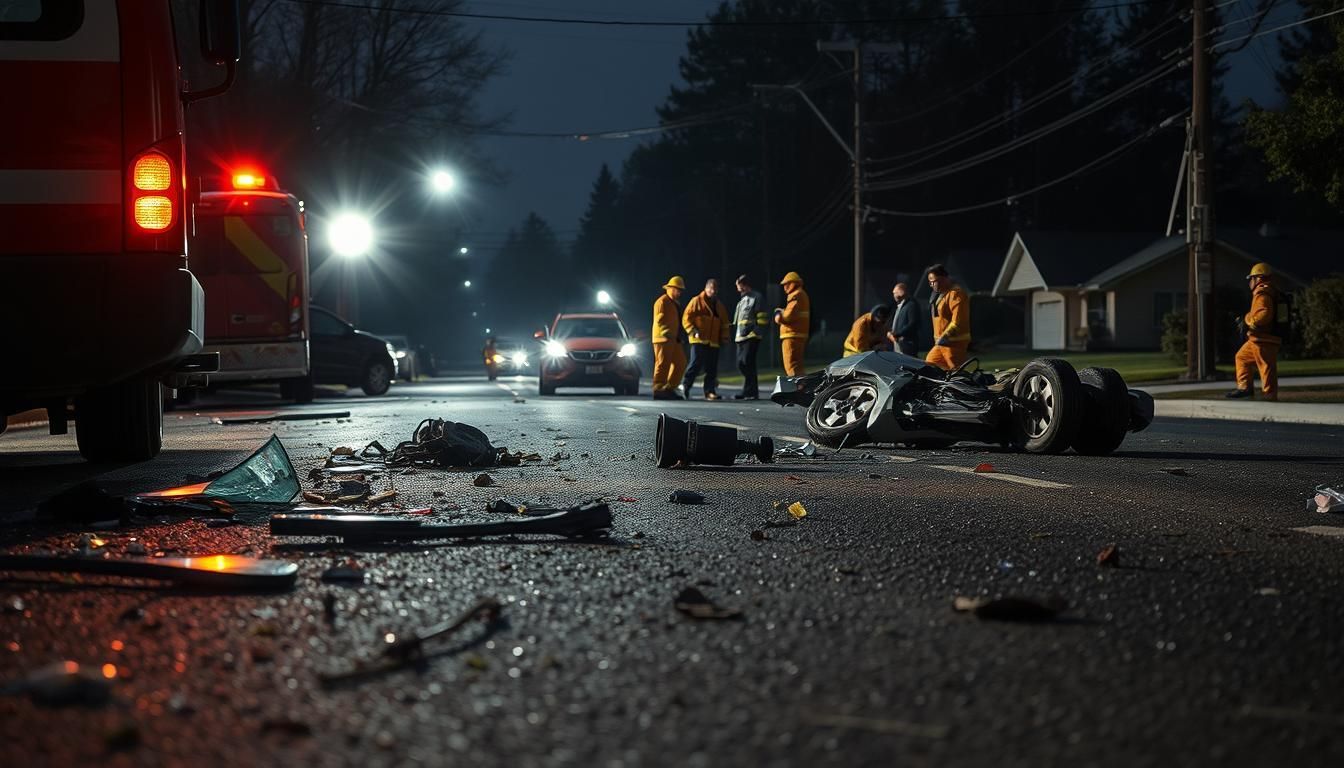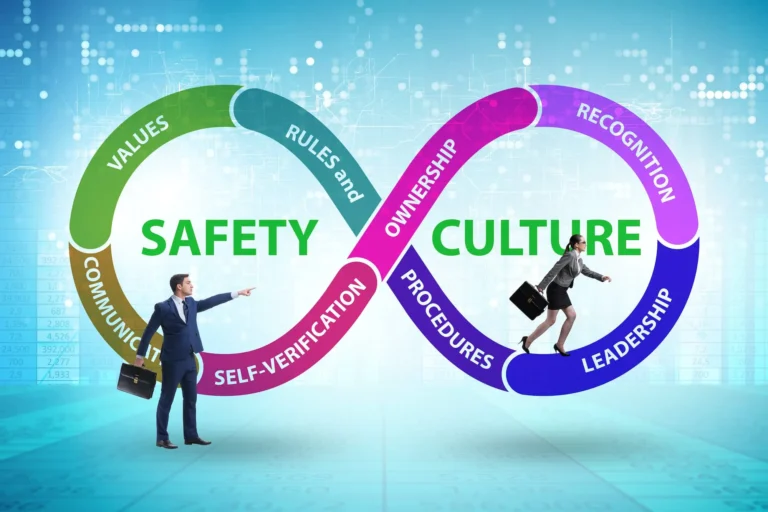Staying safe on the road is a top priority for drivers, passengers, and pedestrians alike. Understanding the risks associated with car accidents is crucial to preventing them. By being aware of the common causes of accidents and taking steps to mitigate those risks, individuals can significantly reduce their chances of being involved in a collision.
Road safety is a shared responsibility that requires attention to detail, adherence to traffic laws, and a healthy dose of caution. By adopting defensive driving techniques and staying informed about best practices for accident prevention, drivers can help create a safer driving environment for everyone.
Key Takeaways
- Understanding the risks associated with car accidents is crucial to preventing them.
- Adopting defensive driving techniques can significantly reduce the risk of accidents.
- Staying informed about best practices for accident prevention is essential.
- Road safety is a shared responsibility that requires attention to detail and adherence to traffic laws.
- Being aware of common causes of accidents can help individuals mitigate those risks.
The Alarming Statistics of Car Accidents in the United States
Car accidents are a pervasive issue in the United States, with far-reaching consequences for individuals and society as a whole. The statistics surrounding these accidents are alarming, revealing a significant impact on the country’s safety and economy.
The frequency and severity of car accidents in the US are a major concern. To understand the scope of this issue, it’s essential to examine the annual fatality and injury rates, as well as the economic burden these accidents impose.
Annual Fatality and Injury Rates
The annual number of fatalities and injuries resulting from car accidents in the US is staggering. According to recent data, there are over 36,000 fatalities annually. The number of injuries is even more significant, with millions of people requiring medical attention each year.
Economic Impact of Car Accidents
The economic impact of car accidents is substantial, with estimated costs running into billions of dollars. The expenses include medical bills, lost productivity, and property damage. A detailed breakdown of these costs is provided in the following table:
| Category | Estimated Annual Cost |
| Medical Expenses | $20 billion |
| Lost Productivity | $40 billion |
| Property Damage | $80 billion |
| Total | $140 billion |
The total economic impact of car accidents in the US is estimated to be over $140 billion annually. This staggering figure highlights the need for effective measures to reduce the number and severity of car accidents.
Understanding the Most Common Causes of Car Accidents
Understanding the root causes of car accidents is crucial for developing strategies to prevent them. By identifying the most common factors that contribute to these incidents, drivers can take proactive steps to minimize their risk on the road.
Distracted Driving and Cell Phone Use
Distracted driving is a leading cause of car accidents, with cell phone use being a significant contributor. Activities such as texting, browsing, or talking on the phone divert a driver’s attention away from the road, increasing the likelihood of a collision. To avoid this, drivers should refrain from using their phones while driving and consider using apps that block notifications while the vehicle is in motion.
Speeding and Aggressive Driving Behaviors
Speeding and aggressive driving behaviors, such as tailgating and weaving in and out of lanes, significantly increase the risk of a car accident. These actions reduce a driver’s ability to react to unexpected situations and increase the severity of collisions when they occur. Maintaining a safe speed and avoiding aggressive maneuvers can greatly reduce the risk of being involved in an accident.
Impaired Driving: Alcohol and Drugs
Impaired driving, whether due to alcohol or drugs, severely impairs a driver’s ability to operate a vehicle safely. It affects reaction time, judgment, and coordination, making it a major contributor to car accidents. Avoiding driving after consuming alcohol or drugs is crucial for preventing accidents and ensuring road safety.
Types of Car Accidents and Their Potential Injuries
Understanding the different types of car accidents is crucial for appreciating the risks involved. Car accidents can result in a wide range of injuries, from minor to severe, depending on the type of collision.
Rear-End Collisions and Whiplash Injuries
Rear-end collisions occur when one vehicle crashes into the back of another. These accidents often result in whiplash injuries, which can cause neck pain, stiffness, and limited mobility. The force of the impact can also lead to other injuries, such as head trauma or spinal cord damage.
Side-Impact (T-Bone) Accidents
Side-impact accidents, also known as T-bone collisions, happen when one vehicle strikes another at a right angle. These crashes can be particularly dangerous, as they often result in significant damage to the vehicle and its occupants. Injuries from T-bone accidents can include broken bones, internal injuries, and head trauma.
Head-On Collisions and Their Severity
Head-on collisions are among the most severe types of car accidents, often resulting in significant injuries or fatalities. The impact of a head-on collision can cause severe trauma, including broken bones, internal injuries, and head or spinal cord damage. The severity of these accidents makes them particularly dangerous.
Rollover Accidents and Single-Vehicle Crashes
Rollover accidents occur when a vehicle flips onto its side or roof. These crashes can be caused by various factors, including speeding or losing control on a slippery road. The injuries sustained in rollover accidents can be severe, including head trauma, spinal cord damage, and broken bones.
Immediate Steps to Take After Being Involved in a Car Accident
After a car accident, the actions you take can significantly impact your safety, the outcome of any insurance claims, and potential legal proceedings. It’s essential to remain calm and follow a structured approach to ensure that you handle the situation effectively.
Ensuring Safety at the Accident Scene
The first priority after a car accident is to ensure your safety and the safety of others involved. Move to a safe location if the accident occurred on a busy road, and turn off the engine. Check for injuries and provide assistance if needed. It’s also crucial to be aware of your surroundings to prevent further accidents.

Documenting Evidence and Exchanging Information
Documenting evidence is vital for insurance claims and potential legal actions. Take photos of the accident scene, including vehicle damage and any visible injuries. Exchange contact and insurance information with the other parties involved. It’s also helpful to note the weather and road conditions at the time of the accident.
When and How to Contact Emergency Services
If there are injuries or significant property damage, it’s essential to contact emergency services immediately. Provide them with your location and a clear description of the incident. Even if the accident seems minor, it’s advisable to file a police report as it can be crucial for insurance purposes.
By following these steps, you can ensure your safety, facilitate the insurance and legal processes, and reduce the stress associated with being involved in a car accident.
The Legal Aftermath of Car Accidents
Car accidents not only cause physical harm but also lead to complex legal issues. Understanding these legal implications is crucial for those involved in an accident.
Understanding Fault and Liability Laws
Fault and liability laws vary by state, but generally, they determine who is legally responsible for the accident. Determining fault is crucial as it affects insurance claims and potential legal actions. In some states, comparative negligence rules apply, where the fault is distributed among parties involved.
Navigating Insurance Claims and Coverage
After a car accident, dealing with insurance companies is a necessary step. It’s essential to understand your insurance coverage and the process of filing a claim. Insurance companies assess the damage and determine compensation based on the policy and the degree of fault.
When to Hire an Attorney After an Accident
Not all accidents require legal representation, but in cases involving significant damage, injury, or disputed fault, hiring an attorney can be beneficial. An experienced attorney can guide you through the legal process, negotiate with insurance companies, and represent you in court if necessary.
Understanding when to seek legal help is crucial. If you’re unsure about the extent of your injuries, the damage to your vehicle, or the fault in the accident, consulting with an attorney can provide clarity and protect your rights.
Essential Defensive Driving Techniques to Prevent Car Accidents
The key to avoiding car accidents lies in mastering defensive driving strategies that anticipate and respond to potential hazards. Defensive driving is a set of driving skills and strategies that help drivers anticipate and respond to potential hazards on the road. By adopting these techniques, drivers can significantly reduce their risk of being involved in a collision.
Maintaining Proper Following Distance and Speed
One of the fundamental principles of defensive driving is maintaining a safe following distance. This allows drivers to have enough time to react to unexpected situations. The three-second rule is a simple guideline to follow: count three seconds after the vehicle in front passes a fixed point before you reach that point. Adjusting speed according to road conditions is also crucial. For instance, reducing speed in rain or fog can significantly improve safety.

Scanning and Anticipating Road Hazards
Defensive drivers are constantly scanning the road for potential hazards. This includes watching for pedestrians, cyclists, and other vehicles, as well as anticipating the actions of other drivers. By being aware of their surroundings, drivers can react to potential dangers before they become actual hazards. This proactive approach can prevent many types of accidents.
Managing Blind Spots and Safe Lane Changes
Another critical aspect of defensive driving is managing blind spots and making safe lane changes. Checking mirrors and blind spots regularly can help drivers avoid collisions when changing lanes. It’s also essential to signal intentions before changing lanes to alert other drivers. A simple check of the blind spot can prevent a potentially disastrous accident.
Eliminating Distractions While Driving
Distracted driving is a significant cause of accidents. Defensive drivers know the importance of minimizing distractions while driving. This means avoiding the use of mobile phones, eating, or engaging in conversations while driving. By staying focused on the road, drivers can react more quickly to unexpected situations and avoid accidents.
| Defensive Driving Technique | Benefit |
| Maintaining Proper Following Distance | Reduces the risk of rear-end collisions |
| Scanning and Anticipating Road Hazards | Helps in reacting to potential dangers before they become hazards |
| Managing Blind Spots and Safe Lane Changes | Prevents collisions during lane changes |
| Eliminating Distractions While Driving | Reduces the risk of accidents caused by distracted driving |
By incorporating these defensive driving techniques into their daily driving habits, individuals can significantly reduce their risk of being involved in a car accident. As
“The key to safety is not in avoiding danger, but in being prepared for it.”
This mindset is at the heart of defensive driving.
How Weather Conditions Contribute to Car Accidents
Weather conditions play a significant role in car accidents, and understanding their impact is crucial for safe driving. Various weather conditions can affect the safety of the road, making it essential for drivers to be aware of and adapt to these conditions.
Different weather conditions require different driving strategies. For instance, rain and fog can significantly reduce visibility, making it harder to navigate the roads.
Driving Safely in Rain and Fog
When driving in rain or fog, it’s essential to reduce speed and increase following distances. Using low-beam headlights in foggy conditions can help reduce glare from the fog, improving visibility. Additionally, avoiding hard braking and sharp turns can help prevent skidding on wet roads.
Drivers should also be aware of the potential for hydroplaning on flooded roads. If a vehicle starts to hydroplane, easing off the gas and not slamming on the brakes can help regain traction.
Navigating Snow, Ice, and Extreme Weather
Snow and ice can be particularly hazardous, as they can cause vehicles to lose traction. Driving slowly and using gentle movements on the steering wheel and brakes can help maintain control. It’s also crucial to know when to stop driving and wait for the weather to improve.
Extreme weather conditions, such as heavy snowstorms or heatwaves, can also impact road safety. Staying informed about weather forecasts and road conditions can help drivers plan their routes and avoid hazardous areas.
Modern Vehicle Safety Features That Reduce Car Accident Risks
The integration of cutting-edge safety technologies in contemporary vehicles has revolutionized accident prevention. These advancements are designed to mitigate the risk of accidents and enhance overall road safety.
Automatic Emergency Braking and Collision Warning Systems
Automatic Emergency Braking (AEB) and Collision Warning Systems are crucial safety features that help prevent accidents. AEB can automatically apply the brakes if a potential collision is detected, while Collision Warning Systems alert the driver of an impending crash. These features are particularly effective in reducing rear-end collisions. According to the National Highway Traffic Safety Administration (NHTSA), AEB can reduce crashes by up to 50%.
Lane Departure Warning and Lane Keeping Assistance
Lane Departure Warning (LDW) and Lane Keeping Assistance (LKA) are designed to prevent accidents caused by drifting out of a lane. LDW alerts the driver if the vehicle drifts out of its lane, while LKA can make adjustments to keep the vehicle on course. These features are especially useful on long trips or during periods of driver fatigue. Studies have shown that LDW can reduce the risk of accidents by alerting drivers to potential hazards.
Blind Spot Detection and 360-Degree Cameras
Blind Spot Detection (BSD) and 360-Degree Cameras provide drivers with enhanced visibility around their vehicle. BSD warns drivers of vehicles in their blind spot, while 360-Degree Cameras offer a comprehensive view of the surroundings. This combination is particularly useful during lane changes and parking maneuvers. The use of BSD and 360-Degree Cameras can significantly reduce the risk of accidents caused by blind spots.
The Psychological Impact of Car Accidents

The aftermath of a car accident often reveals a lesser-discussed consequence: the psychological impact on those involved. While physical injuries are immediately apparent, the emotional and psychological toll can be just as debilitating, affecting individuals long after their physical wounds have healed.
Recognizing Post-Traumatic Stress After an Accident
Post-traumatic stress disorder (PTSD) is a common psychological consequence of car accidents. Symptoms can include flashbacks, severe anxiety, and an inability to cope with daily life. Recognizing these signs early is crucial for effective intervention. Individuals should be aware of the potential for PTSD and seek professional help if they or someone they know is experiencing these symptoms after an accident.
Recovery Strategies and Overcoming Driving Anxiety
Overcoming the psychological impact of a car accident requires a multifaceted approach. Strategies for recovery include therapy, support groups, and, in some cases, medication. For those experiencing driving anxiety, gradual exposure to driving, coupled with relaxation techniques, can be beneficial. It’s also helpful to have a supportive network of family and friends.
Understanding the psychological impact of car accidents is essential for providing comprehensive support to those affected. By acknowledging the potential for psychological trauma and offering appropriate resources, individuals can better cope with the aftermath of an accident.
| Psychological Impact | Symptoms | Recovery Strategies |
| Post-Traumatic Stress Disorder (PTSD) | Flashbacks, severe anxiety, inability to cope with daily life | Therapy, support groups, medication |
| Driving Anxiety | Fear of driving, avoidance of driving situations | Gradual exposure to driving, relaxation techniques |
Special Considerations for High-Risk Driver Groups
High-risk driver groups, including teens, the elderly, and commercial operators, need tailored approaches to road safety. These groups face unique challenges that can increase their likelihood of being involved in a car accident.
Teen Drivers: Education and Graduated Licensing
Teen drivers are among the most vulnerable on the road due to their inexperience. Graduated licensing programs have been implemented in many states to help mitigate this risk. These programs involve a multi-stage process where young drivers progress from supervised driving to full licensure as they gain experience and demonstrate safe driving practices.
The effectiveness of these programs is enhanced when combined with comprehensive driver education that includes both theoretical knowledge and practical driving skills.
Elderly Drivers: Challenges and Safety Adaptations
As people age, their driving abilities can be affected by declining physical and cognitive functions. Elderly drivers may need to adapt their driving habits to compensate for these changes. This can include avoiding driving at night, limiting their driving to familiar areas, and avoiding complex intersections.
Some elderly drivers may benefit from driving assessments that can identify areas where they may need additional training or support. Technology, such as collision avoidance systems, can also play a crucial role in enhancing their safety on the road.
Commercial Vehicle Operators and Fatigue Management
Commercial vehicle operators, such as truck drivers, face unique risks due to the nature of their work, including long hours and the potential for fatigue. Fatigue management is critical to preventing accidents involving commercial vehicles. Regulations such as the Hours of Service rules in the United States are designed to limit the number of hours a commercial driver can operate a vehicle without rest.
Effective fatigue management also involves lifestyle adjustments and the use of technology to monitor and manage driver fatigue. Companies can play a crucial role by implementing policies that promote driver well-being and safety.
| Driver Group | Key Challenges | Safety Measures |
| Teen Drivers | Inexperience, risk-taking behaviors | Graduated licensing, driver education |
| Elderly Drivers | Declining physical and cognitive abilities | Driving assessments, adaptive technology |
| Commercial Vehicle Operators | Fatigue, long hours | Fatigue management regulations, lifestyle adjustments |
Conclusion: Building a Safer Driving Future
As we’ve explored the complexities of car accidents, it’s clear that safer driving practices are crucial to reducing the risk of collisions on our roads. By understanding the common causes of accidents, such as distracted driving and speeding, we can take steps to prevent them. The importance of defensive driving techniques, such as maintaining a safe following distance and being aware of road hazards, cannot be overstated.
To build a safer driving future, it’s essential to prioritize accident prevention and promote road safety. This can be achieved through a combination of education, awareness, and responsible driving behaviors. By working together, we can reduce the number of car accidents on our roads and create a safer environment for all drivers.
Ultimately, road safety is a collective responsibility that requires the efforts of drivers, policymakers, and the automotive industry. By adopting safe driving practices and leveraging modern vehicle safety features, we can minimize the risk of accidents and protect ourselves and others on the road.
FAQ
What are the most common causes of car accidents?
The most common causes of car accidents include distracted driving, speeding, and impaired driving. According to the National Highway Traffic Safety Administration (NHTSA), distracted driving alone accounted for 10% of all fatal crashes in the United States in 2020.
What should I do immediately after being involved in a car accident?
After a car accident, ensure your safety and the safety of others by moving to a safe location if possible. Then, document the scene, exchange information with the other parties involved, and contact emergency services if necessary. It’s also crucial to report the accident to your insurance provider.
How can I prevent car accidents while driving in bad weather?
To prevent car accidents in bad weather, reduce your speed, increase your following distance, and avoid hard braking or sharp turns. Additionally, ensure your vehicle is equipped with proper tires and functioning windshield wipers. For more information, check out the Federal Highway Administration’s guide on driving in bad weather.
What are some effective defensive driving techniques?
Effective defensive driving techniques include maintaining a safe following distance, scanning the road for hazards, and eliminating distractions while driving. The National Safety Council (NSC) recommends that drivers stay focused on the road and avoid using their cell phones or other electronic devices while driving.
How do modern vehicle safety features reduce car accident risks?
Modern vehicle safety features such as automatic emergency braking, lane departure warning, and blind spot detection can significantly reduce the risk of car accidents. These features can help prevent or mitigate the severity of crashes, and are becoming increasingly standard in new vehicles.
What are the potential psychological impacts of being involved in a car accident?
Being involved in a car accident can lead to post-traumatic stress disorder (PTSD), driving anxiety, and other psychological issues. The American Psychological Association (APA) recommends seeking professional help if you’re experiencing symptoms such as flashbacks, nightmares, or avoidance behaviors after an accident.
How can teen drivers reduce their risk of being involved in a car accident?
Teen drivers can reduce their risk of being involved in a car accident by completing a driver’s education course, practicing safe driving habits, and avoiding distractions while driving. The Graduated Licensing Program, which is implemented in many states, can also help teen drivers gain experience and build their skills in a controlled environment.
What are some common injuries associated with different types of car accidents?
Different types of car accidents can result in various injuries. For example, rear-end collisions often cause whiplash, while head-on collisions can lead to more severe injuries such as head trauma and broken bones. Understanding the potential injuries associated with different types of accidents can help you take steps to prevent them.
When should I hire an attorney after a car accident?
You should consider hiring an attorney after a car accident if you’re unsure about how to navigate the insurance claims process, if you’ve suffered a serious injury, or if you’re facing disputes with the other parties involved. An experienced attorney can help you understand your rights and options, and fight for the compensation you deserve.







